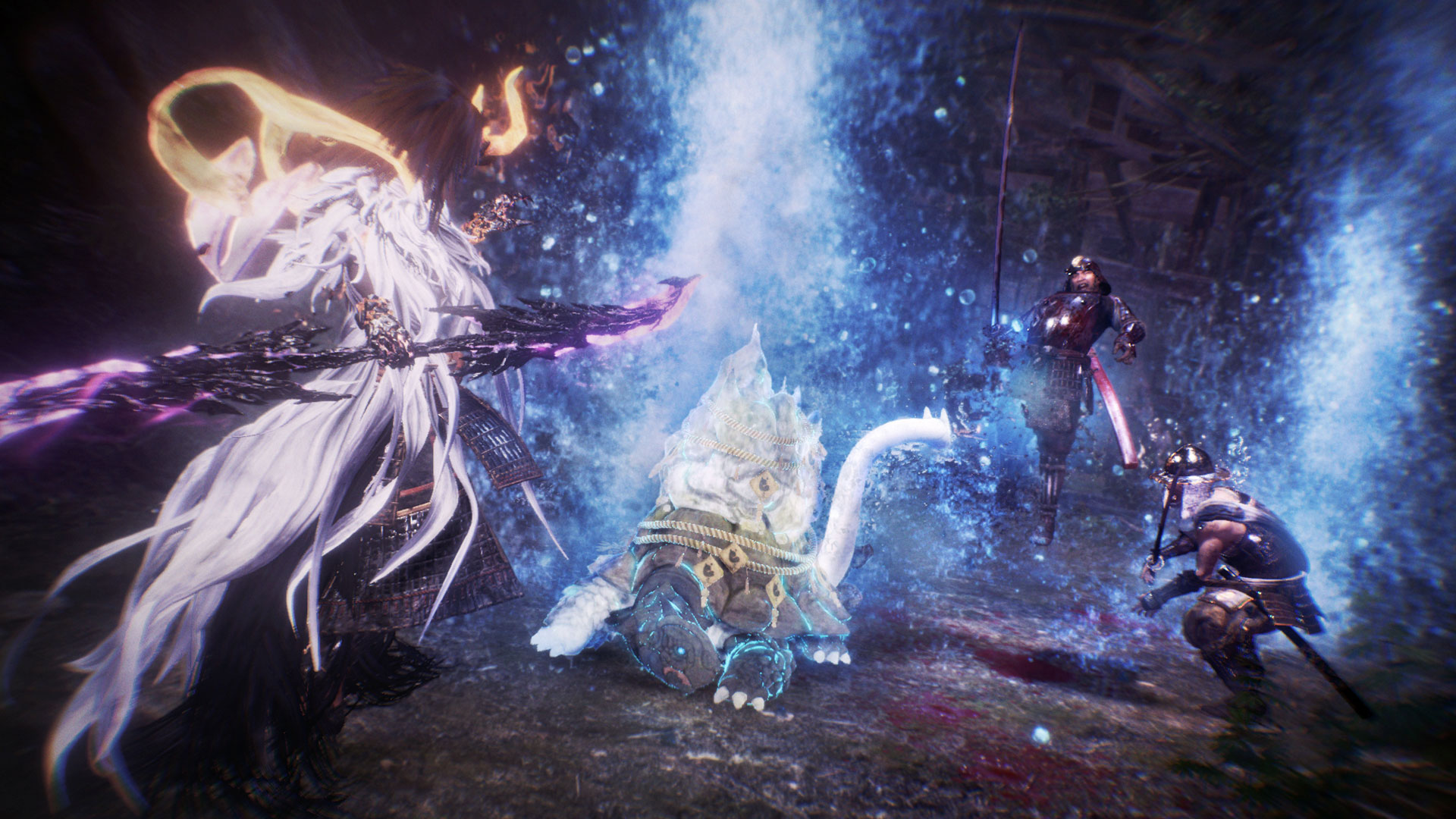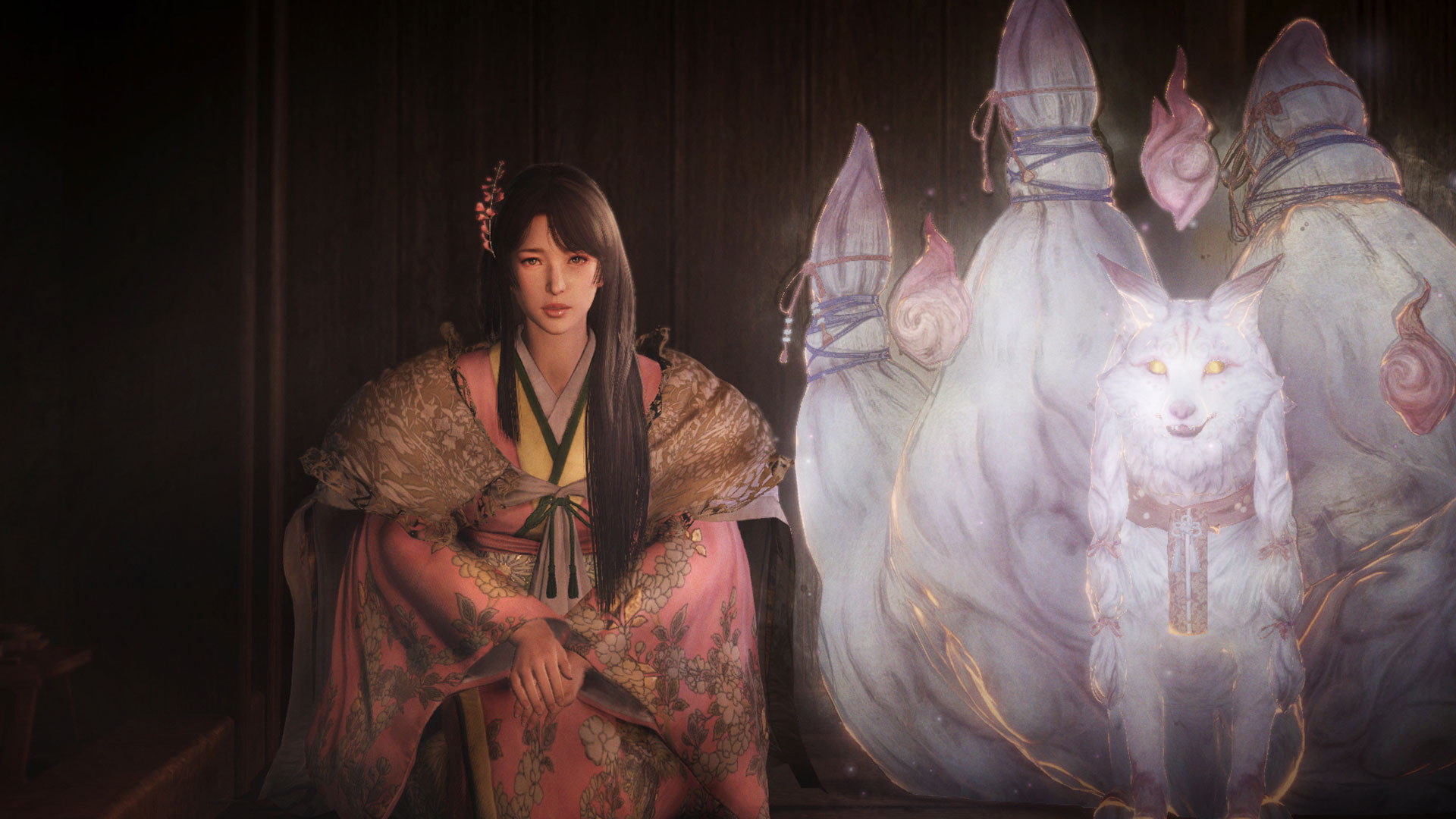GamesRadar+ Verdict
Nioh 2 might play it safe in some respects, but the fluidity, depth and intensity of its combat is incredible.
Pros
- +
Supremely polished combat systems
- +
The new weapons are great to use
- +
Some finely crafted locations
- +
Amazing boss encounters
Cons
- -
Some missions go on too long
- -
Too much pointless loot
Why you can trust GamesRadar+
Cut down, impaled, burned, electrocuted, beaten, run over, squeezed, bitten, frozen and scratched to death. Just some of the ways I’ve 'met my end' playing Nioh 2, in the game’s own words, as every time I die it takes a little sadistic joy in telling me what killed me and how. But I dust myself off and try again, because each hard-fought victory and inch of progress is breathlessly rewarding.
Nioh 2 very much doubles down on the vision of the first game. It tells another story of feudal Japanese warlords, samurai and demons. It again sticks close to From’s Dark Souls structure, with added loot and frenetic combat that recalls Team Ninja’s own classic Ninja Gaiden series. And it’s still huge, with long, meandering main missions bolstered by optional sub-missions that often reuse parts of the same maps.

Release date: March 13, 2020
Platform(s): PS4
Developer: Team Ninja
Publisher: Sony / Koei Tecmo
In fact, it’s a little too familiar, and could have done more to trim the bloat that weighed down the otherwise accomplished original. Especially after Sekiro, which saw From Software streamline its Souls formula to suit a more action-focused experience, I’d hoped Team Ninja might follow suit. But even though it hasn’t, it’s hard to stay disappointed, because Nioh 2 makes bold forward strides where it really counts – in its level and enemy design, and fluid combat.
Grand designs

The mazy levels are more dense and intricate than in the first game. I sometimes felt lost with all the paths available, but it’s impressive how the routes loop around and link together. A couple of times I’d covered what felt like miles to reach the end of a level, only for a final shortcut to connect back to the start. The complexity and verticality of each area also provide multiple ways to approach a problem. If a main gate leads straight into a group of monsters, it’s worth looking for other ways around, perhaps emerging behind to pick off isolated enemies, or giving you access to roofs so you can fire down from above.
Missions often develop visually in unexpected ways, or contain great set pieces and one-off mechanics. A green sunlit meadow surrounds a muddy garrison. A dungeon ascends into a castle with towers of amber Amrita snaking around the walls. One section sees you battling enemies while wading through rice fields, another requires you to drain canals, creating new spaces for exploration below. This and a few other areas also pair you up with an NPC, which changes the pace as you cut through the hordes together.
There’s further richness in the way Nioh 2 expands its dark realm of Yokai demons. As before, patches of translucent mist block paths and bring forth a demon when touched. But now, some whole areas are infected by the Yokai dimension, and stop you opening treasure chests or accessing shrines (save points) within. These places are teeming with Yokai, and the only way to restore normality is to hunt down a particular creature at its centre. Succeed and you clear the whole area of monsters, but each is a tough little challenge.
The art of fighting

The content of the challenge, of course, comes from the game’s close combat, and this is where it really shines. As before, the key is ki, the equivalent of the Dark Souls stamina bar. Exhaust your ki and you’re momentarily unable to move, but by triggering a ‘ki pulse’ after each attack or combo you can keep it recharging, allowing you to sustain pressure on enemies. And if their ki runs out, you can deliver a critical blow. Manage your ki and minor enemies can often be blitzed aside, but can still be deadly if you’re too reckless. Larger Yokai are brutally aggressive, but even they can be quickly dispatched once you knock their ki down.
So far so Nioh, but some fantastic new additions bring additional depth and ferocity to the past game’s stance switches, dodges and finishing moves. I’ve mainly been using two of the game’s new weapon types, the dual hatchets and the switchglaive, and the latter especially is an instant favourite. As a quick change of stance alters its form between a one-handed razor, a bladed pike, and a huge scythe, it wouldn’t feel out of place in Bloodborne or Monster Hunter.

Then there are your own Yokai powers. You can attune the souls of defeated Yokai, which enable you to momentarily transform into that monster and deliver its signature move. You also have a ‘burst counter’ to respond to enemies’ devastating burst attacks, signalled by a red mist. Time the counter right and you stop them in their tracks, wrecking their ki supply.
I found it hard to remember everything at first, but the combat is so wonderfully responsive, reliable and clear, and eventually clicks into a fluid rhythm. Bait, dodge, combo and pulse, throw in a soul core attack for a quick finish or to get out of a tight corner, always ready to respond to that red flash. Almost every fight is on a knife edge. Beating a tough Yokai or coming through a group encounter is a mini ordeal of precision and tenacity, as you juggle powers, advance and retreat to punish their mistakes or recover from your own. Burst counters are a superb addition – horribly risky but able to quickly turn a battle in your favour.
World’s best boss

And that’s before you even get to the boss battles, which only magnify the drama. Big or small, they’re supreme specimens, attacking relentlessly with speed, strength and variety. But each defeat at their hands is a learning process, and they telegraph their attacks just enough and leave windows of vulnerability between each set. Even though some of them took me many attempts to beat (one in particular nearly broke me), it rarely felt like an unreasonable challenge.
I especially like the way these battles shift through phases, in a far more elegant way to the multi-life bar marathons of Sekiro. Break their ki and they summon in the Yokai realm, powering them up with additional moves and making your ki recovery more difficult, but also making them more vulnerable. As the battle intensifies, they shift the Yokai realm in and out more rapidly, switching the advantage back and forth. At any time, a single lapse could cost you everything, and the last few blows can seem like a mountain to climb. Or a burst counter might bring you back from the verge of defeat. It’s magnificent.
Too much of a good thing

Yet even with its advancements over the first game, including more enemy types, Nioh 2 is still too big with too much filler. Missions can drag, certain environments, such as settlements of wooden huts, military barracks and grimy dungeons are repeated too often, and the same old shortcut devices – doors locked from the other side or ladders that need kicking down – are overused. At times, progress slips into a bland routine, as you find a shrine, follow a path slaying monsters, kill a tricky enemy to unlock a shortcut back, then take the next path.
Also, if the size of the game is supposed to accommodate its extensive loot and upgrading systems, I found these redundant on a first play through. As in Nioh, I dismantle or sell most of the gear I find at the blacksmiths between missions to clear out my inventory. Rather than encourage me to experiment with crafting and other systems, they sit on top of the action and core RPG elements like needless admin tasks.

No doubt dedicated Nioh 2 players will happily explore these extra layers. After all, it isn’t only a demanding single-player action game, but an experience that can be enjoyed more leisurely with friends, whether farming loot together or just helping other players out. In that respect there’s certainly plenty of content, with many options for character and build customisation, and from the small amount I’ve played, teaming up with other humans works very well.
Even playing solo, while Nioh 2 still doesn’t quite balance the immediacy of its action with the depth of its RPG and loot systems, that hasn’t put me off playing it any more than the hundreds of deaths I’ve suffered at its hands. Its combat is remarkable, requiring strategy and skill and giving back so much in return, in a way that makes it one of the best games of its kind.
Reviewed on PS4.
Jon Bailes is a freelance games critic, author and social theorist. After completing a PhD in European Studies, he first wrote about games in his book Ideology and the Virtual City, and has since gone on to write features, reviews, and analysis for Edge, Washington Post, Wired, The Guardian, and many other publications. His gaming tastes were forged by old arcade games such as R-Type and classic JRPGs like Phantasy Star. These days he’s especially interested in games that tell stories in interesting ways, from Dark Souls to Celeste, or anything that offers something a little different.



